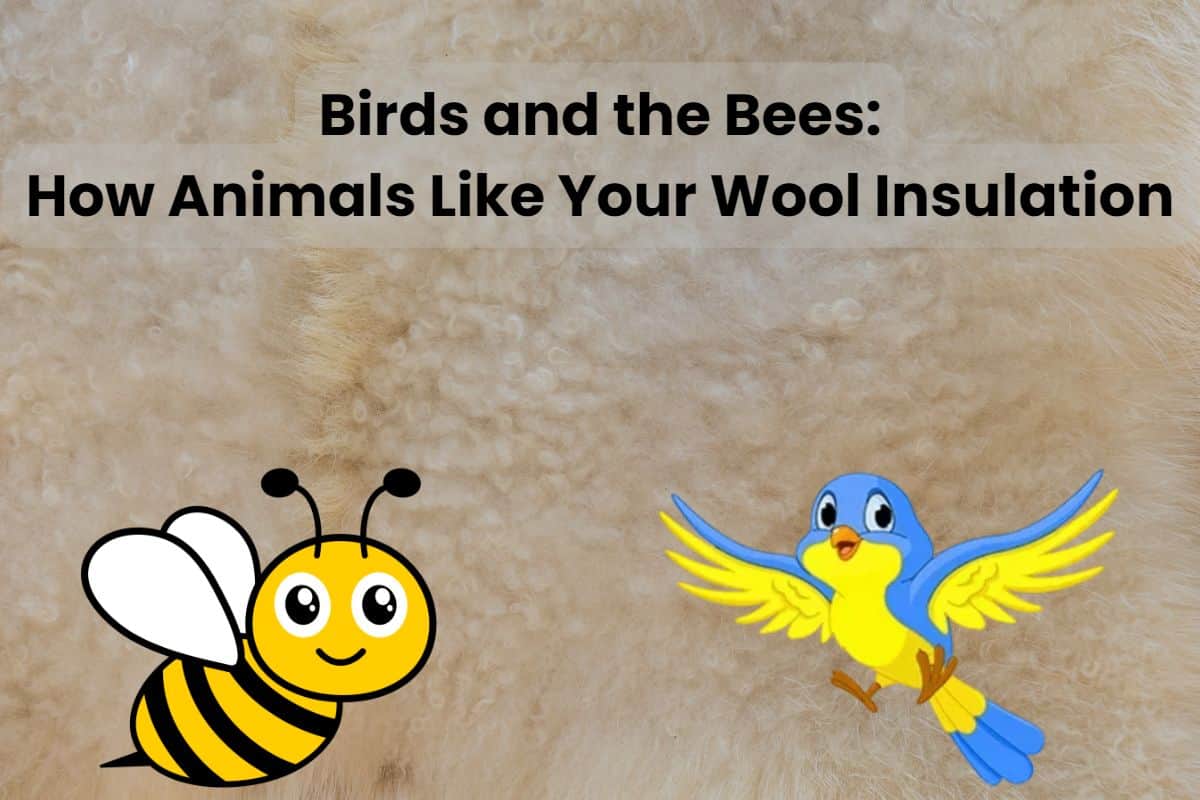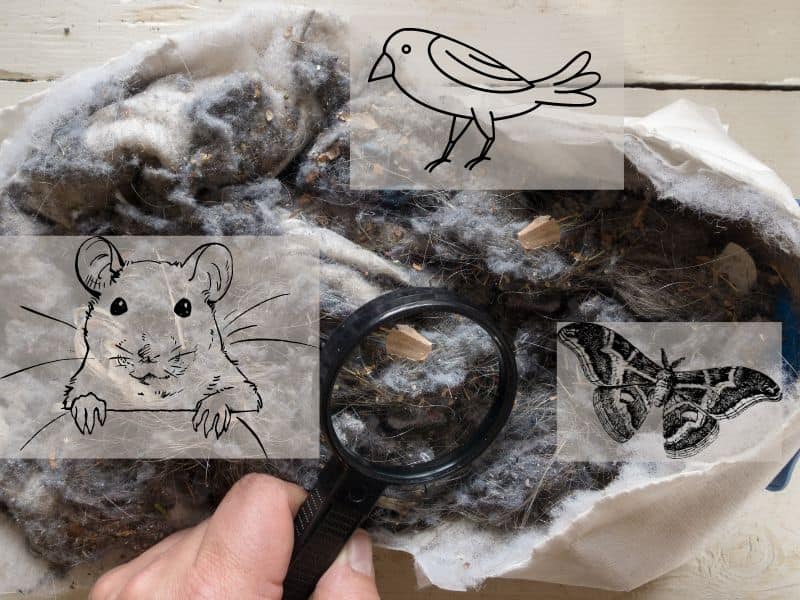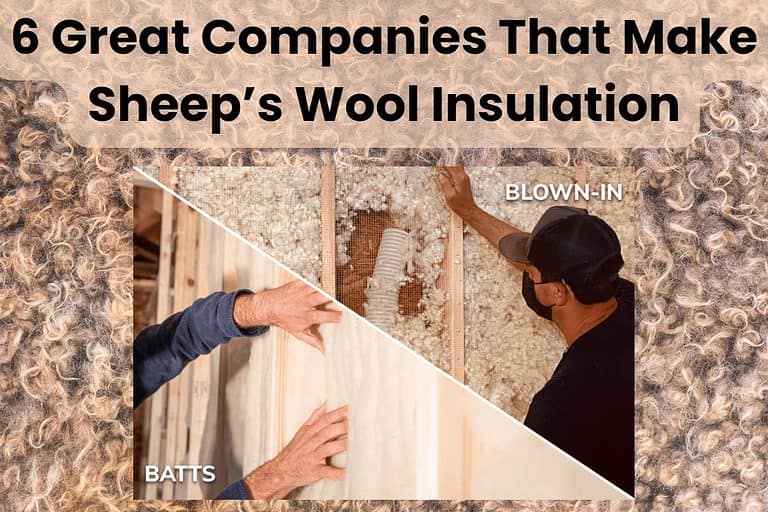Birds and the Bees: How Animals Like Your Wool Insulation

Animals, like humans, need to keep their body temperature warm in the winter. But unlike us, many species don’t have the luxury of turning up the thermostat or putting on extra layers of clothing.
Instead, they rely on natural insulation like wool to stay cozy and comfortable.
Wool insulation provides an excellent balance of warmth, breathability, and durability that animals need to keep warm. It is lightweight, flexible, and absorbent, making it ideal for use in nests or bedding materials. Its fibers are elastic and fit snugly around the animal’s body, trapping heat.
Not only is wool insulation great for keeping many species of animals warm, but it is also naturally flame resistant. It doesn’t emit toxic fumes, making it a safe choice for homebuilding.
Sheep’s wool insulation can help to keep your home cool on hot days and keep the cold at bay as temperatures plummet in the winter.
Read on as I delve further into why your wool insulation is popular among animals.
Sheep’s wool insulation is becoming more popular with humans, too. Havelock Wool is one of the premier companies that manufactures this natural and renewable product. Read our review of Havelock Wool here.
Do Birds Like Sheep Wool?

Many birds love wool insulation. It’s lightweight and flexible enough to be woven into intricate nests tucked away in tree branches.
The porous fibers of wool can also create a cozy lining for the nest that will prevent heat loss and protect it from harsh elements.
During the rainy season or cold spells, birds may use wool to insulate their nests and to create a waterproof barrier between them and the elements.
Wool can absorb up to 30% of its own weight in moisture and will dry quickly, keeping the bird safe from potential hypothermia. This feature is much better than fiberglass insulation, which performs much worse if wet.
Do Bees Like Wool?

A beehive insulated with wool provides a cozy, safe home for the bees. The breathable fibers of wool assist in temperature regulation and help to reduce moisture levels inside the hive, keeping it dry and comfortable.
Wool insulation also helps to reduce condensation and the risk of mold, keeping the hive healthy and safe for the bees.
Additionally, unlike other insulation materials, wool has excellent acoustic dampening properties and will help to reduce noise pollution in the hive. This keeps the bees calm and productive, even when living close to a busy city or town.
Do Mice Like Sheep Wool?

Mice like sheep wool. The tiny fibers of wool are easy to manipulate and create a warm, comfy home in nooks and crannies. Wool insulation also helps to keep the mice safe and protected from predators, as it dampens sound and masks their presence.
Wool insulation also helps trap in the warmth and keeps the mice cozy and comfortable even during the coldest winter.
The dense fibers act as a barrier against water, ensuring the mice stay dry and safe from potential inundation. Wool insulation insulates the mice from the cold ground as they burrow and make their nests.
Can Wool Insulation Grow Mold?

Wool insulation cannot grow mold; it is naturally resistant to mold and mildew. The natural keratin in wool helps to repel moisture and microbes, preventing mold from growing. Additionally, wool insulation’s breathability reduces humidity levels in the air and ensures a dry, healthy environment.
Mold and mildew pose serious health risks to humans and animals alike and can lead to various illnesses, including respiratory issues. Wool insulation suppresses these risks and creates a safe, healthy environment for animals.
Does Sheep’s Wool Insulation Attract Moths?

Treated sheep’s wool insulation does not attract moths, as the natural oils and lanolin in the wool act as a repellent. The tight weave of wool prevents moths from gaining access to the insulation and protects it from damage. However, untreated wool insulation can be vulnerable to moth damage.
Therefore, ensuring that all wool insulation is treated properly before use is crucial.
While adult moths aren’t dangerous, their larvae can cause severe damage to wool insulation as they feed off the fibers. This compromises the insulation’s ability to trap heat effectively and may even cause it to break down sooner than expected.
Using treated wool insulation negates the risk of a moth infestation and helps to ensure your insulation remains in top condition for longer.
Does Wool Insulation Attract Vermin?

Wool insulation can attract vermin, such as rodents, insects, and other pests, due to its warmth, breathability, and protective qualities. However, you can deter pests by properly treating wool insulation with a non-toxic bio-repellent.
The repellent irritates their delicate skin and respiratory systems, discouraging them from nesting in your insulation.
Besides, wool insulation’s excellent smell masking capability helps to keep vermin away, as it prevents them from detecting potential food sources.
When using wool insulation from a high-quality manufacturer, you can rest assured that your home is safe and secure from unwanted guests.
However, if poor-quality sheep’s wool insulation is used, and if infestations are left unchecked, vermin can compromise the integrity of wool insulation, leading to higher energy bills and a less comfortable home.
Vermin can also cause health issues and spread disease, making it all the more important to ensure they can’t access your insulation.
Final Thoughts On Pest Control For Wool Insulation
Ultimately, wool insulation is a favorite animal nesting material for its versatile and protective qualities.
It keeps them warm, dry, and safe in their homes, just like it does for us.
With proper treatments and correct installation, the risk of vermin infesting your wool insulation can be minimized, so there’s little to worry about.
So, the next time you look for a safe and reliable insulation material, consider wool.
If you’d like to buy some sheep’s wool insulation for your next project, check out our article “6 Great Companies That Make Sheep’s Wool Insulation.” It will set you on the right path.







